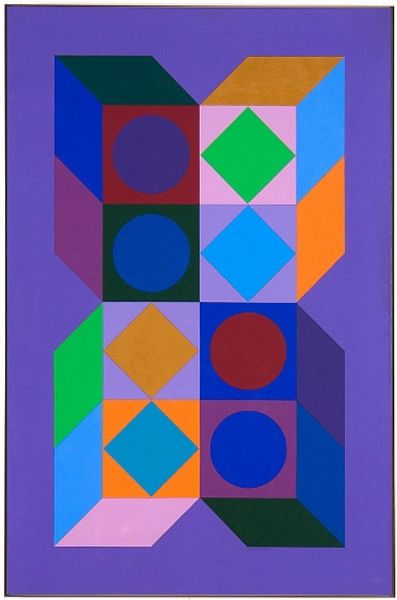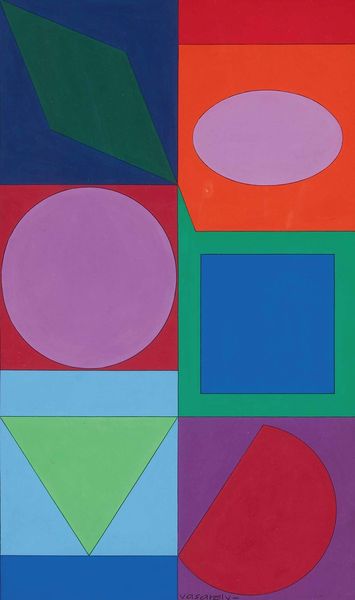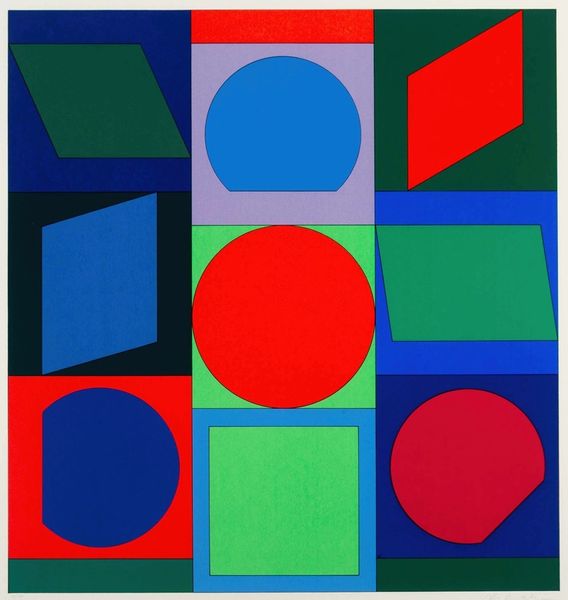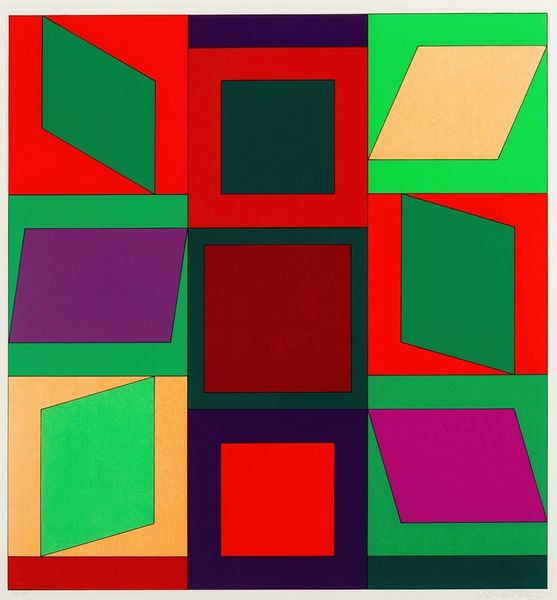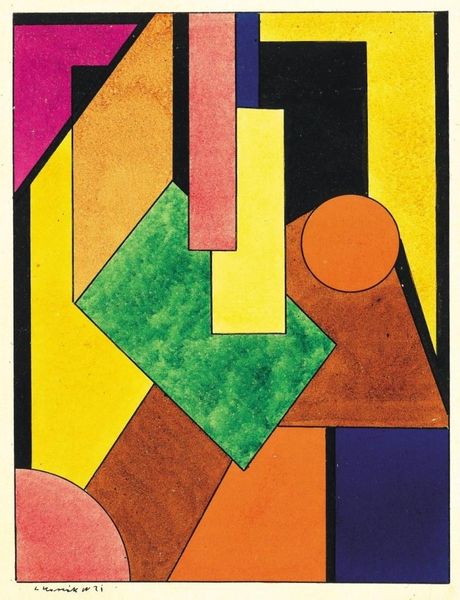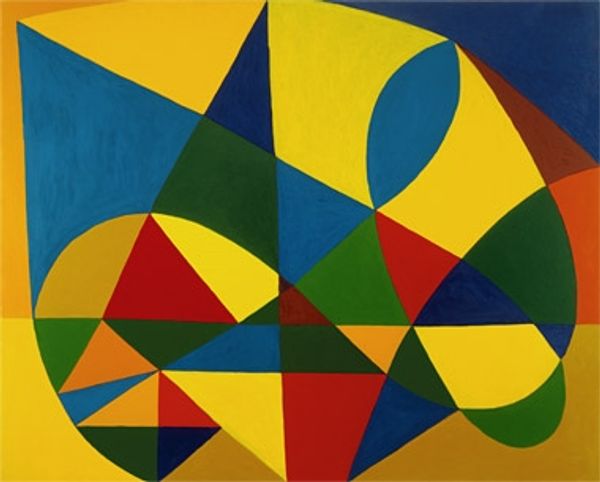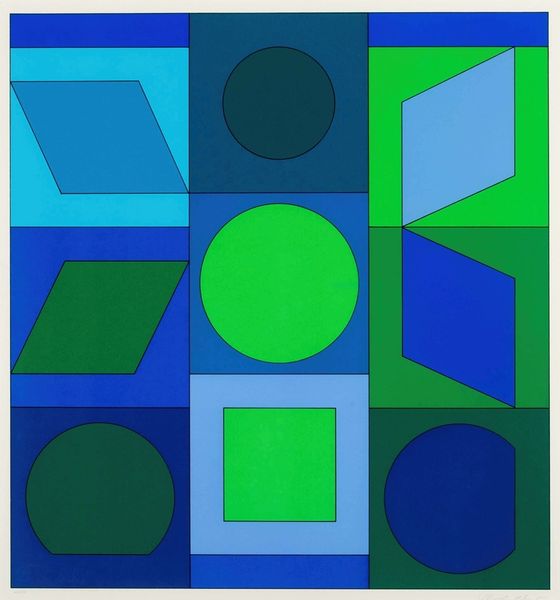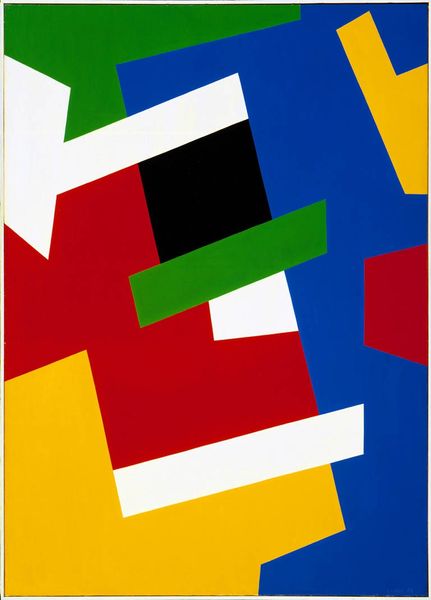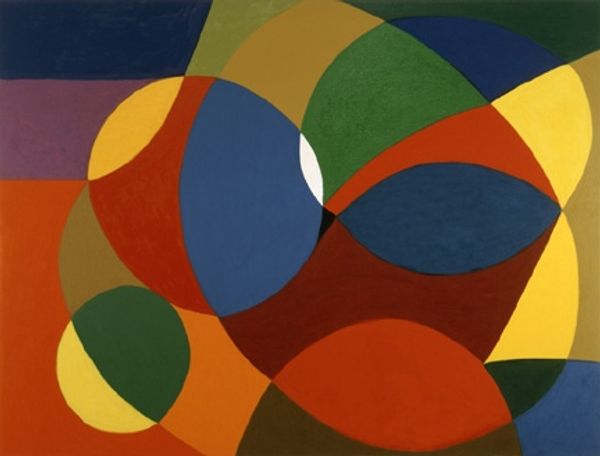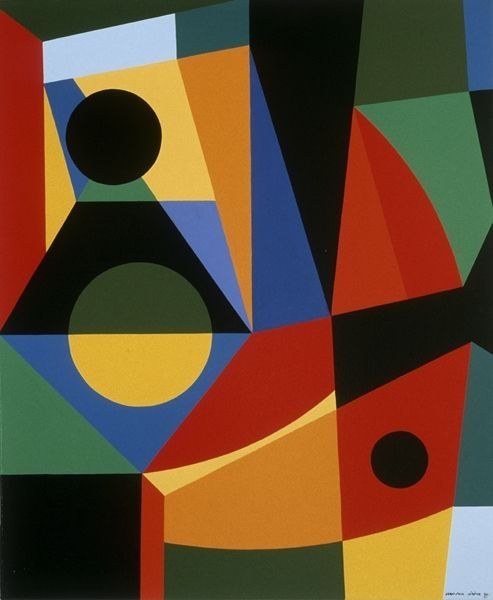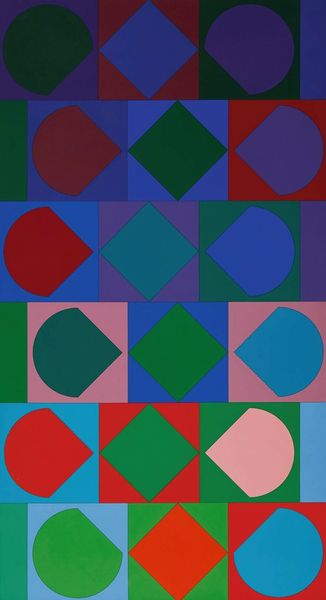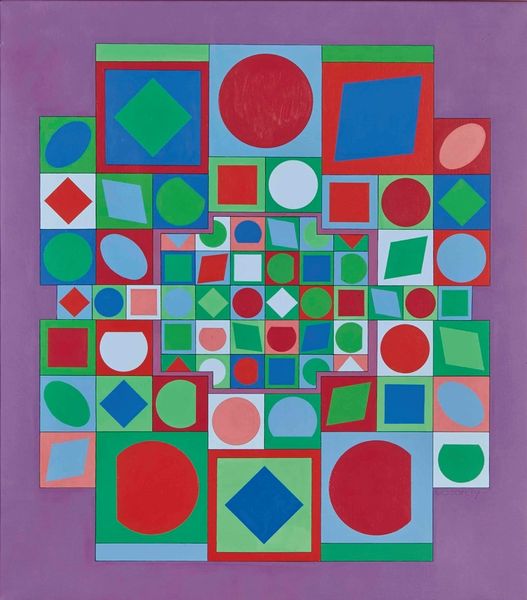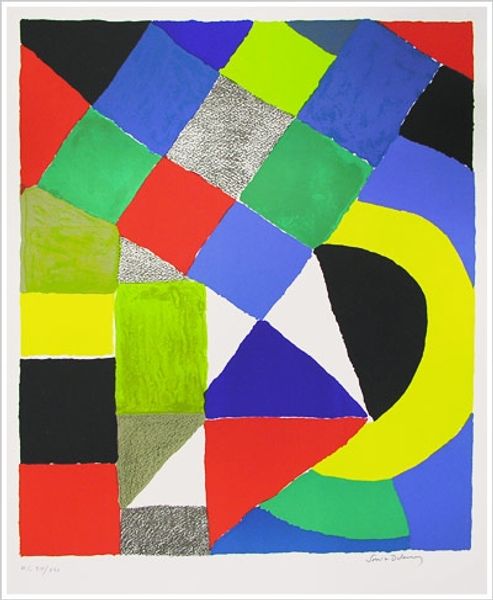
Copyright: Modern Artists: Artvee
Curator: Vasarely’s "Orias" from 1980, executed in acrylic, offers such a striking visual experience. What stands out to you initially about this work? Editor: The geometric shapes are so vibrant, and the colors really pop. There is a sense of order but also chaos at the same time, everything floating but in a constructed manner. How can you interpret that? Curator: Consider the historical context. "Orias" was created during a period of intense social and political change. What sociopolitical parallels could we possibly draw between this constructed chaos and a wider world view? Do you perceive a commentary on structure and society, maybe about the constraints or even the instability present within rigid systems? Editor: So, you mean that the strict geometry is representative of constraints, yet the floating nature of each shape challenges our sense of what’s stable and permanent? I suppose the lack of clear perspective would definitely feed into that idea. Curator: Exactly! Op Art, in general, was challenging perception, mirroring the challenges to social norms and traditional power structures. Color is another crucial element. What message could be communicated through those blocks? Is it cultural? Is it social? Or maybe personal? Editor: The boldness does speak to a certain audacity. Thinking about the time, the rise of Pop Art also aimed to subvert the mainstream by incorporating bold colours into artworks. Curator: Absolutely. And how might this subversion relate to gender, race, or identity, if at all? How can these concepts be approached visually? Editor: I hadn’t considered the possible links between Op Art and a broader discussion of identity. It makes me look at "Orias" with fresh eyes. Curator: Right? The piece encapsulates the social struggles, and ultimately, becomes an echo chamber, or a sign of those troubled times.
Comments
No comments
Be the first to comment and join the conversation on the ultimate creative platform.
